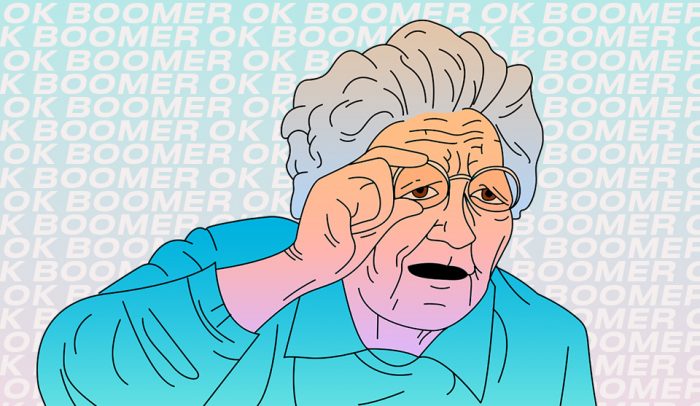“Experience” has become a dirty word, bandied about by age-averse managers looking to find reasons to push out older workers. Age-based discrimination in the workplace can start as early as 45—and that’s especially true in the creative fields. While attitudes may be slowly changing now that older workers are staying in the workforce for longer, most businesses have a long way to go before they become any better at accommodating them. But it’s time to take the idea of experience back. Because a designer’s years in the field make a difference when it comes to actually practicing design. Here’s why you should have an older designer in your circle.
They’ve seen it all before
As we’ve discussed before, creativity isn’t just for the young. In fact, a person’s creative output often increases as they get older. But beyond creativity, what’s needed to produce good design is a strong background in it—that’s why people with a foundation in design history and a knack for pattern recognition are so valuable.
Older designers tend to have the kind of creative problem-solving skills that only get learned (and passed down to younger colleagues) over time, when circumstance necessitates it. Of course, more experienced designers are also the most reliable institutional memory, quickly drawing on past projects and trends as sources of inspiration. But more valuable than that, they’re unflappable. As advertising powerhouse Cindy Gallop argues, nothing phases older workers. They’ve weathered every crisis already. Take the current situation with the coronavirus: who in your office reacted with level-headedness and constructive solutions, and who reacted with panic and confusion?
They’re great communicators
One of the benefits of having experience working in office environments is that you know how to talk to people. In general, older designers tend to exhibit the soft skills that come from years of working on teams and dealing with difficult clients. Their skills and E.Q. make them such good leaders—both internally and externally.
In case you’ve forgotten this incredible diagram of a meeting from Pentagram’s Paula Scher, a groundbreaking design often comes down to exquisite presentation. Having a practiced, persuasive communicator in a boardroom is an extremely valuable asset for a design team.
They value work ethic
A strong work ethic isn’t something that workers are born with; it’s developed over time. That’s because one’s work ethic is based on more than just the skills required for a given job. It’s a system of values that are accrued and reinforced. Work ethic encompasses everything from an individual’s time-management skills and focus to their overall perseverance and self-reliance. And studies show that older workers tend to have a stronger work ethic than their younger counterparts—even with all their responsibilities outside of the office.
The difference between a good employee and a great one comes down to commitment. Studies have shown that older employees tend to value stability more than young workers—and that loyalty to one’s job increases with age. In other words, there’s tremendous value to an older worker’s ethic, which can benefit a company’s culture (as well as its bottom line).
They’ve got their own networks
It’s not what you know, it’s who you know. And in general, the more experience you have in a given field, the larger your rolodex. That’s an important asset to a team, whether you’re at a large agency with a packed roster of clients or at a boutique shop growing your new business. And it’s just one example of how an older designer can become an important model that the rest of the team follows. Once younger designers see how business relationships can be maintained over time, they’ll have a greater incentive to forge their own.
They know how to avoid ageist pitfalls
Sometimes, design teams lose sight of the fact that there are people over the age of 35 engaging with their creation. They might make the type too small for someone with poor eyesight. They might make assumptions that the audience will understand how to proceed with the piece, rather than providing clear, concise calls to action. A seasoned designer knows how to catch and avoid these pitfalls that young designers never even think about.
They’ve lived
Older workers are an invaluable resource for any team—not just because they can bring their whole varied careers to their job, but because their age in and of itself is a creative asset. Creativity is a connective process, and in general, the more life experience you have, the more connections you can make.
Many older designers know firsthand how important it is to be adaptable and flexible when it comes to design work, because they’ve had to practice those skills on themselves and their own careers. They’re masters of reinvention—and they’ve managed to keep working in a youth-obsessed field because they understand that the social conception of age is a bit of an illusion. The mind is adaptable, and good design, like any art form, just comes down to a rigorous practice. So, if you’re hoping to work with a designer who’s at the top of their game, start with someone seasoned.



